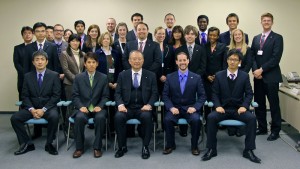
Glad to see you all back here, perservering through winter in Japan!
Last year was arguably the biggest year in the JET Programme’s history. I personally was grateful to be a part of it, and honored to serve you all during it. We saw the 25th anniversary of JET itself in the same year that Japan was struck with disasters of historic proportion. With great determination, this country and we, as officially invited guests, stood strong in our dedication and determination to recovery.
I’d like to personally thank all of you across the country for the variety of projects, events, and fundraising that you contributed to Japan in the aftermath of the March 11th disasters. It was admirable, selfless, and made me proud to be your colleague!
As you may already know, AJET wrapped up 2011 with its bi-annual opinion exchange with CLAIR, MoFA, MEXT and MIC on December 12th and13th.
If you’re not familiar with how these meetings work, I’ll give you a quick run-down.
These meetings are very important to the successful administration of JET as a program. It’s also an official platform for AJET to gather the opinions and experiences of JETs, and share them with the ministries in hopes of running a Programme that is constantly getting better, and more effective in its purpose.
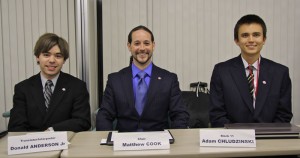 First, AJET surveys JETs online, based on the issues that JETs tell us are important to them. We take the data collected from those surveys and use it to write research reports. After sending those to the ministries, we meet for two days with the ministries to discuss the results, ask questions, give suggestions and share opinions about what we’re doing and where we’d all like the JET Programme to go in the future.
First, AJET surveys JETs online, based on the issues that JETs tell us are important to them. We take the data collected from those surveys and use it to write research reports. After sending those to the ministries, we meet for two days with the ministries to discuss the results, ask questions, give suggestions and share opinions about what we’re doing and where we’d all like the JET Programme to go in the future.
This December, we discussed how Prefectural Advisors (PAs)view their roles and experiences with the system as PAs, how English education is being implemented and taught in elementary schools, and updated them on AJET’s work, activities and accomplishments this year.
This whole process is entirely fueled by JETs responses and views across this country. Because of that, I believe that AJET owes it to all of you to really convey what happened there, and let you know why these discussions were important.
On the first afternoon, Donny Anderson (AJET Translator) presented an excellent summary and powerpoint, in Japanese, on our report, “Foreign Language Activities at the Elementary School Level”. The findings of the report were directed toward the Ministry of Education and included suggestions and recommendations put forth by myself, Donny, and Adam Chludzinski (AJET Blcok 11 Representative) and interpreted by Donny Anderson. Those recommendations included ways that AJET could assist them by providing large scale solutions to problems that are within a system that’s dependent on local level administrators for decisions how to actually implement it’s ideas.
Afterward, Cailin Arena (Director of Public Relations) facilitated a discussion with the ministries regarding the “AJET General Activities” report. This report was a detailed breakdown of all the changes to our organizational structure since July. The purpose of this was to make AJET’s operations easy to understand for the ministries who support us, and reach out to them for financial and logistical assistance. We also included a detailed explanation of how AJET has begun to use social media to reach JETs across Japan, and a breakdown of our new business model.
Considering that AJET functions on a 100% independent basis (with no government budget), we rely on support from the Programme’s coordinators in many ways, not just financially. Ultimately, each organization was reminded of our common goals, and AJET was promised new support as well as the continuation of existing assistance.
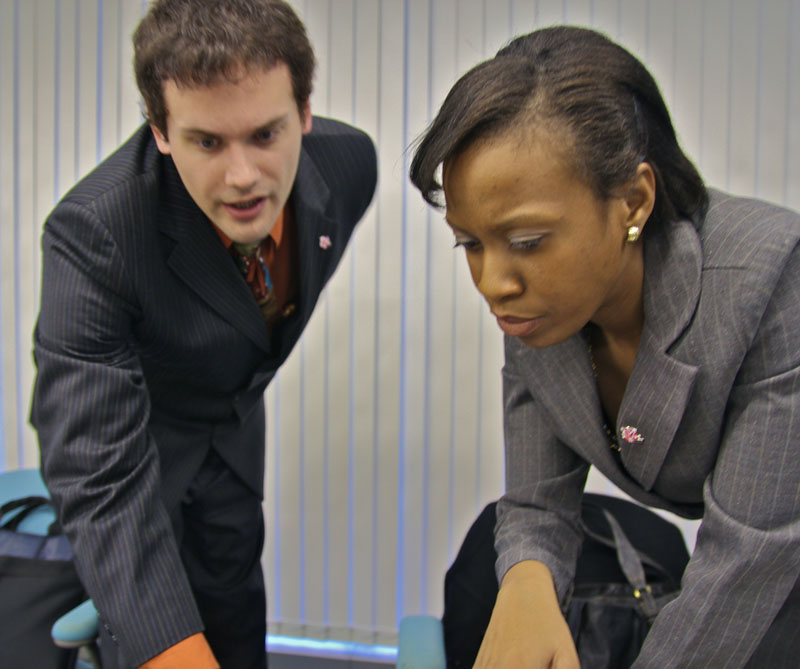 The next morning, Erica Nakanishi-Stanis (Volunteering and Aid Coordinator) gave a summary in Japanese on the “Peer Review of the PA System” report. Erica highlighted the four themes of the report, which were selection of PAs, how they are trained, how they view their roles, and their roles during the aftermath of the 3/11 disasters.
The next morning, Erica Nakanishi-Stanis (Volunteering and Aid Coordinator) gave a summary in Japanese on the “Peer Review of the PA System” report. Erica highlighted the four themes of the report, which were selection of PAs, how they are trained, how they view their roles, and their roles during the aftermath of the 3/11 disasters.
Following summary, Erica and Denise Schlickbernd (AJET CIR Representative) facilitated a dialogue with the ministries regarding their findings. As Erica and Denise are both PA’s, they were able to bring a very comprehensive and analytical approach to this report and discussion.
In the end, I was reminded just how important these meetings and our collaboration with the ministries are. Sometimes, we can see direct changes or start new endeavors right there in these meetings. Other times, this is just when a seed is planted. It’s important for us as a council and future councils to remember that even though we may not get the answer that JETs want right then and there, sometimes the effects of these conversations and exchanges of opinions come to fruition in the long run.
In the grand scheme of things, the five organizations who work together to coordinate the success of the JET Programme all have different roles in JET for different reasons. However, it is important to remember that proper collaboration results in one of the largest international exchange initiatives in the world that has, and continues to, touch the lives of millions both in and outside Japan.
I’ve left that meeting with a rejuvenated spirit carried through good tidings of spirit and celebration of the holidays and new year! This January, as I start the last 6 months of my 5 year JET career, I’m sure that this will be the most important and best yet! I hope you’ll join us and we get ready to make 2012 the year that won’t be forgotten, and starts a new chapter in the JET Programme History!
Connect with you next month,
Matthew Cook

あけましておめでとうございます!
皆さんが、日本の冬を乗り越えて、この地へ戻ってきたことを嬉しく思います!
昨年は、JETプログラムの歴史にも名を残す、大きな年となりました。私は、直接それに関わり、皆さんの力となれたことを大変光栄に思っております。我々は、歴史にも残る日本での大震災に見舞われた今年、JETプログラムの25周年を迎えました。表向きはゲストである我々が、強い決意のもと、この国とその復興のために、献身的な姿勢と決断力で強く立ち向かいました。
3月11日の震災の余波の間、日本のために様々な事業やイベント、そして募金活動に専念されていた全国の皆さんに、私は、心より感謝したいと思います。それは、賞賛に値し、無欲で行っていた皆さんの仲間であれたことを、とても誇りに思っています。
すでにご存知かとは思いますが、AJETは、2011年度のまとめに入り、12月12日と13日には、CLAIR(自治体国際化協会)と外務省、そして文部科学賞と総務省との中間意見交換会議が行われました。この会議について、あまりなじみがないという方のために手短かにご説明をいたします。
この会議は、JETプログラムの成功を管理する上でとても重要な会議です。さらに、JETでのそれぞれの経験や意見を持ち寄り、改善に向かって、さらに影響力のあるプログラムとなることを目的に運営していくため、それらを各省と共有することが、AJETにとっての公式的な基盤となっています。
 初めに、JETがもつ問題は、我々にとって重要であることから、AJETは、オンラインでJETに対して調査を行いました。そして、集計されたデータをもとに報告書を作成しました。それを各省に送った後、その結果についての話し合いと、これからのJETプログラムの目標について意見交換をするために、我々は各省と2日間の会合を開きました。
初めに、JETがもつ問題は、我々にとって重要であることから、AJETは、オンラインでJETに対して調査を行いました。そして、集計されたデータをもとに報告書を作成しました。それを各省に送った後、その結果についての話し合いと、これからのJETプログラムの目標について意見交換をするために、我々は各省と2日間の会合を開きました。
この12月、我々は、PA(都道府県のアドバイザー)がそれぞれの役割をどのように理解し、その組織の中でのPAとしての経験について話合いました。そして英語教育がどのように施行され小学校で教えられていること、また同時に、今年のAJETの実務、活動、そして成果についての情報の更新も行われました。
この全行程は、JETたちの返答と、全国からの意見によって促進されるため、AJETは、
そこで何が起こったかを、皆さんに正確にお伝えする必要があると思いました。
初日の午後、(AJETの翻訳担当)ダニー・アンダーソンは、我々の“小学校レベルでの外国語活動“についての報告書を日本語のパワーポイントで、素晴らしい要約にして発表いたしました。報告書の結果は、私とダニー、そして(AJETの第11ブロック代表)アダム・ホルジンスキーの提案や推薦が加えられ、それがダニーによって翻訳され、文部科学賞に向けて送られました。それらの提案には、地方管理局の決断によって、実際に彼らの着想が施行される形態の中において、AJETが、大規模での問題解決法を提供し、彼の役に立つことができるということも含んでいました。
その後、(AJETの広報担当)ケイリン・アリーナが、ダニー・アンダーソンによって発表された、“AJETの一般的な活動”についての報告書について、各省との話し合いの促進をいたしました。この報告書は、7月より組織構成を一変したAJETの内訳について詳しく書かれたものです。この目的は、我々を支える各省にとって、AJETの事業を、変わりやすく解説し、財政と論理にかなった支援とアドバイスにより、彼らの力になることが目的でした。
AJETが(政府からの予算もない中)100%独立した構築基盤で成り立っていることを考えると、我々は、様々な方面でプログラムのコーディネイター等の支援に頼っています。結果的に、各団体により、我々の共通の目標に気がつかされ、AJETは、現存する援助の継続と同じような、新たなサポートを約束いたしました。
 次の日の朝、(AJETの第4ブロック代表でCIR/PAでもある)エリカ・中西・スタニスは、“PAシステムのピアレビュー”の報告書の要約を日本語で発表しました。エリカは、PAによって選ばれた報告書の中の4つのテーマである、PAの訓練のされ方、彼らの役割への認識、そして3/11の大震災の余波の中での彼らの立場などついて焦点をおきました。要約に続き、エリカと(AJETのCIR代表)デニース・シュリックベールンドは、彼らの調査結果をもとに各省との対話を取り持ちました。エリカとデニースが、どちらもPAということもあり、この報告書と話し合いに対し、十分な理解力があり、分析的な姿勢で取り組むことができました。
次の日の朝、(AJETの第4ブロック代表でCIR/PAでもある)エリカ・中西・スタニスは、“PAシステムのピアレビュー”の報告書の要約を日本語で発表しました。エリカは、PAによって選ばれた報告書の中の4つのテーマである、PAの訓練のされ方、彼らの役割への認識、そして3/11の大震災の余波の中での彼らの立場などついて焦点をおきました。要約に続き、エリカと(AJETのCIR代表)デニース・シュリックベールンドは、彼らの調査結果をもとに各省との対話を取り持ちました。エリカとデニースが、どちらもPAということもあり、この報告書と話し合いに対し、十分な理解力があり、分析的な姿勢で取り組むことができました。
最後に、私はこれらの会議と、我々と各省との協力がどれほど重要かということを改めて思い知らされました。これらの会議の場では、新しい試みを開始したり、直接的な変化を見ることもできます。そして時には、これが、種を蒔くだけの時であったりもします。これは、我々役員と、将来の役員会のメンバーが、そのとき、そこでJETが求めている答えを見つけられなかったとしても、意見交換やそれらの話し合いにより、最終的には成果を実らせることもあるのです。
この壮大な計画の中において、JETプログラムの成功のため、共に働く5つの団体は、それぞれの分野で役割を果たしています。しかし、世界的にも、最大ともいる国際交流の取り組みの一つであるJETプログラムが、これからも続いていき、またそれにふさわしい成果となる、何万人もの命に触れるということは、国内と国外のどちらであっても大切であるということを忘れないでいただきたいのです。
私は、連休と新年をお祝いする気持ちとうまく混ざり合った、活力に満ちた心構えで会議を後にしました。この1月、5年間のJETの経歴の中で、この6ヶ月間は、今のところ私にとって、もっとも重要で最高の期間であることに間違いありません。この2012年が、忘れられない年となり、JETプログラムの歴史に新しい章を刻んでいくことに、皆さんが賛同されることを願っております。
来月、またつながりましょう。
マシュー・クック
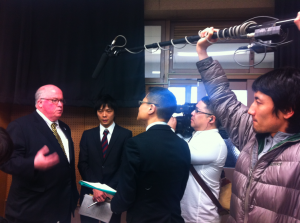
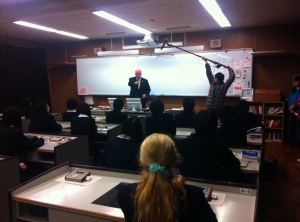 It turned out to be one of the most impressive classes I have ever seen, and I was surprised by the level of their course material. Many students were memorizing vocabulary definitions, that would be difficult for native English speakers, much less EFL students! Afterward, Patrick engaged the students, speaking to them about political topics, studying abroad, and how to achieve their dreams in life. Several media outlets were there covering the event and gave several of the students the chance to be interviewed on TV themselves.
It turned out to be one of the most impressive classes I have ever seen, and I was surprised by the level of their course material. Many students were memorizing vocabulary definitions, that would be difficult for native English speakers, much less EFL students! Afterward, Patrick engaged the students, speaking to them about political topics, studying abroad, and how to achieve their dreams in life. Several media outlets were there covering the event and gave several of the students the chance to be interviewed on TV themselves.

 Follow
Follow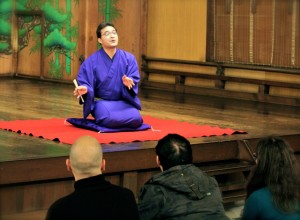
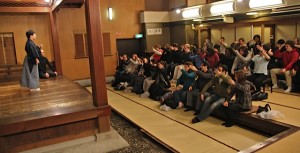
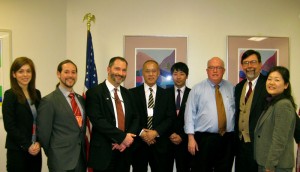
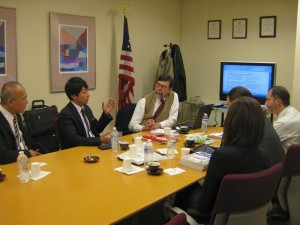



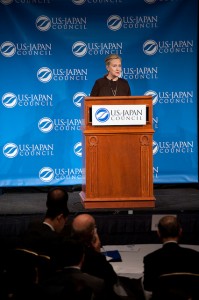
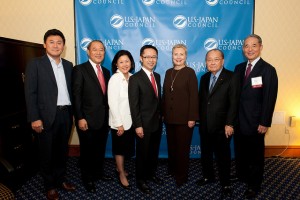
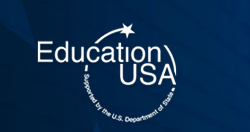

 Connect with me on LinkedIn
Connect with me on LinkedIn Follow me on Twitter
Follow me on Twitter Like me on Facebook
Like me on Facebook Read my RSS Feed
Read my RSS Feed